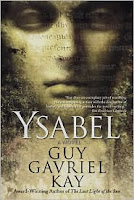STATUS: Back to back conferences are a bit tough. On Sunday I flew back from San Francisco and RWA. Today, Worldcon began right here in Denver. On one hand, I didn’t have to travel to attend. On the other, I might be a little conferenced out but away we go.
What’s playing on the iPod right now? YOU’LL NEVER FIND ANOTHER LOVE LIKE MINE by Lou Rawls
As I mentioned above, Denvention 3 began this morning and I kicked it off with one of the opening sessions on how to create that perfect pitch paragraph in a query letter.
No, I’m not going to beat that almost dead horse again. All you blog readers are pretty much experts by this point.
But one of the session attendees was Jacqueline Lichtenberg, a writer and a reviewer. She added a comment to the panel mix that I thought was well worth repeating. She said that for her job as a reviewer, the back cover copy of any given published novel becomes absolutely essential in terms of deciding which books to actually review. Publishers send her so much that she has stacks and stacks of books just waiting for her attention.
A quick skim of the back cover copy makes her decision on which book to read and review. Go figure. The same technique applies when agents read query letters. If you make your pitch paragraph read like back cover copy, you’ll get attention. But that isn’t the tip I want to share.
From her position as reviewer, Jacqueline recommended that aspiring writers not wait to write their pitch paragraphs or what they would consider their own back cover copy for their novels. She suggested doing that even before the novel is complete. Even, dare I say it, before the novel gets written!
If you can write good back cover copy for the novel you have in mind, your writing will be forced to live up to the copy you’ve created.
I think this is a great idea—especially for writers who are kicking around several ideas and are contemplating which idea to pursue in terms of writing a novel.
Write the back cover copy (in the way it would look if the novel were actually be published) and that alone will force you to focus on that essential plot catalyst that will drive your story forward and force you to focus the novel.
Not a bad day’s work….

